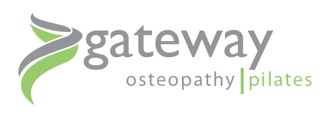With the start of the cricket season, we see a huge spike in rotator cuff injuries. We asked Dr Jessica Bowman if she could tell us a little about these- here’s what she had to say.
Author: Dr Jessica Bowman (Osteopath)
The shoulder joint is relatively unstable, relying on a sling of muscles collectively known as the ‘rotator cuff’ to re-enforce its lack of bone-on-bone contact. These muscles- Supraspinatus, Infraspinatus, Teres Minor, and Subscapularis- are quite unique in that they act to both stabilise and mobilise the joint. This can however leave them vulnerable to irritation, strains, and tears.
The symptoms of a rotator cuff injury vary, but typically manifest in pain over the outside of the shoulder, around the deltoid region. Pain may be referred up the neck, or down the arm as far as the hand. Symptoms are usually aggravated by overhead work or lying on the sore side, and may be accompanied by clicking or snapping sensations.
If a rotator cuff injury is suspected, your osteopath will perform a specific set of orthopaedic tests in order to confirm the diagnosis. They may also refer you for imaging such as X-ray or ultrasound to rule out any factors which may complicate recovery, such as an accompanying bursitis.
Most minor rotator cuff injuries are successfully treated within 6-8 weeks, though naturally this differs with the severity of injury and overall tissue health.
Osteopathic treatment aims to ease pain and inflammation, increase circulation, and increase functional capacity of the shoulder joint. To this end, your osteopath will often apply gentle mobilisation and stretching techniques, as well as various soft tissue therapies to the shoulder and surrounding joints. If they determine a biomechanical deficit or weakness to have predisposed you to your injury, they may also prescribe a range of exercises to assist recovery and prevent symptom recurrence.
Your osteopath will tailor a stretching and strengthening program to your individual needs, however some frequently prescribed exercises include:
- Weighted Pendulum Swing:
- Position yourself side-on to a table or chair, holding a 1kg dumbbell in the hand of the injured arm.
- Contract your Transversus Abdominus (suck belly button in towards spine).
- Gently hinge forward at the hips, using the uninjured arm for support.
- Let the weighted arm hang down, and gently move it in a figure 8 motion. This motion should only be performed within a pain free range.
- Theraband Resisted External Rotation:
- Use your Theraband anchor to secure your band in a door at elbow height. Alternatively, you may simply tie a knot in one end of the Theraband and shut in a door.
- Stand side-on to the door and hold the theraband in the hand furthest from it with your palm up.
- Contract your Transversus Abdominus by sucking your belly button towards your spine and stand tall.
- Lock elbow in towards side, and move hand away from midline of the body.
- Return to the start position and repeat.
- Repeat on opposite side.
- Theraband Resisted Internal Rotation:
- On completion of the above exercise, stand side-on to the door with the Theraband in the hand closest to it.
- Contract your core by sucking your belly button towards your spine and stand tall.
- Lock elbow in towards side, and move hand towards the midline of the body.
- Return to the start position and repeat.
- Repeat on opposite side.
NB: A door anchor is a worthy investment as it prevents injuries that can sometimes occur if a door handle is used and is not securely attached to the door. At Gateway, we sell 1 metre of Theraband for around $5 and door anchors for $15.
If you’re suffering from any kind of shoulder pain at the moment, call and speak with one of our friendly receptionists to arrange an appointment. One of our experienced osteopaths will assess you and provide you with a tailored management plan! 03 9431 5773
*Please note whilst this article includes some general information, shoulder injuries are quite complex and a thorough diagnosis is always necessary before determining the exercises that are the best course of action.
Author: Dr Jessica Bowman (Osteopath)



Recent Comments